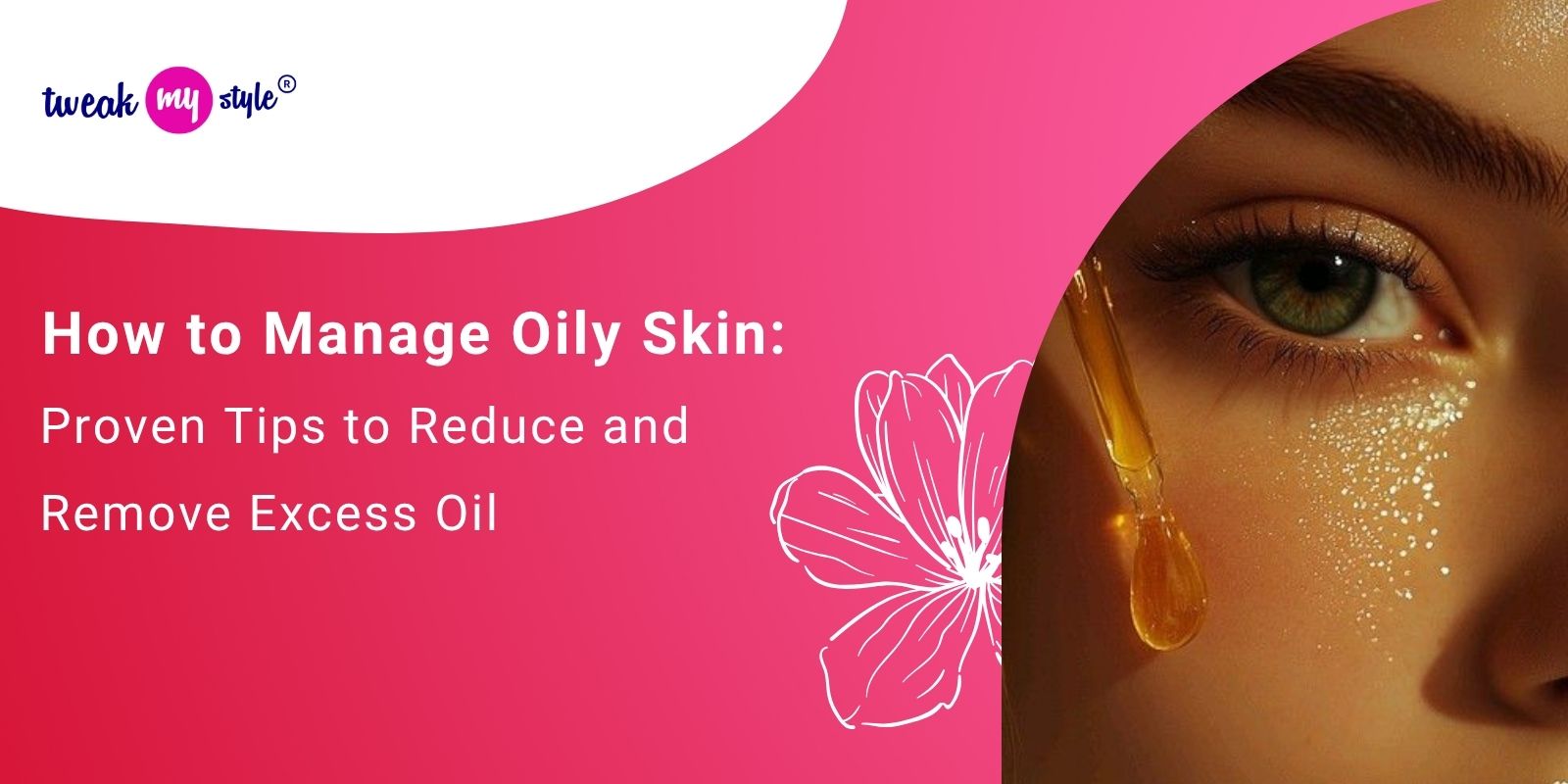Are you tired of dealing with oily skin? Do you struggle with excess oil that makes your face look greasy and shiny, even after washing it twice a day? You're not alone. Millions of people around the world suffer from oily skin, which can be frustrating and affect their self-esteem.
But don't worry, we've got some good news for you! Managing oily skin is possible with the right techniques, products, and lifestyle changes. In this blog post, we'll share proven tips to reduce and remove oil from skin, leaving it feeling fresh, clean, and healthy-looking.
Understanding Oily Skin
Before we dive into the tips, let's quickly understand what oily skin is and why it happens. Oily skin, also known as seborrhoeic dermatitis or acne, occurs when the sebaceous glands in your skin produce too much oil. This excess oil can make your face look shiny, greasy, and prone to blackheads and whiteheads.
There are several reasons why you might be experiencing oily skin:
- Hormonal changes: Hormonal fluctuations during puberty, menstruation, pregnancy, or menopause can cause an increase in sebum production.
- Genetics: If your parents had oily skin, you're more likely to experience it too.
- Environmental factors: Exposure to pollution, humidity, and certain products can contribute to oily skin.
- Skin care routine: Using the wrong products or not washing your face regularly enough can lead to excess oil.
Proven Tips to Reduce Excess Oil
Now that we've understood what causes oily skin, let's move on to some practical tips to help you manage it:
1. Cleanse Your Face Regularly
The first step to manage oily skin is to wash your face regularly with a gentle cleanser. Use a mild soap or a facial cleanser specifically designed for oily skin. Massage the cleanser onto your face, focusing on areas with blackheads and whiteheads.
- Use lukewarm water: Avoid using hot water, which can strip your skin of its natural oils.
- Be gentle: Don't scrub too hard, as this can irritate your skin and make it produce more oil.
- Double-cleanse: If you wear makeup or sunscreen, double-cleanse by washing your face with a gentle cleanser followed by a soothing toner.
2. Use Oil-Control Products
Choose products labeled "oil-control" or "non-comedogenic," which are designed to reduce excess oil and prevent clogged pores. Look for ingredients like:
- Salicylic acid: A beta hydroxy acid that exfoliates the skin and unclogs pores.
- Glycolic acid: An alpha hydroxy acid that helps break down dead skin cells and reduces oil production.
- Tea tree oil: A natural antiseptic with antibacterial properties that can help control acne.
3. Exfoliate Regularly
Exfoliating your skin regularly can help remove dead skin cells, blackheads, and whiteheads, which clog pores and contribute to oily skin.
- Use a gentle exfoliant: Opt for a chemical exfoliant containing alpha or beta hydroxy acids (AHAs or BHAs), rather than physical exfoliants like scrubs.
- Exfoliate once or twice a week: Be gentle with your skin, as over-exfoliating can lead to irritation.
4. Stay Hydrated
Drinking plenty of water is essential for maintaining healthy, balanced skin. Dehydration can make your skin look dull and produce more oil.
- Drink at least eight glasses of water a day: Adjust this amount based on your individual needs.
- Eat hydrating foods: Incorporate foods high in water content, such as cucumbers, celery, and watermelon, into your diet.
5. Avoid Comedogenic Products
Comedogenic products contain ingredients that can clog pores and contribute to oily skin. Look for the "non-comedogenic" or "oil-free" label on skincare products.
- Check product labels: Avoid products containing oils like coconut oil, mineral oil, or petroleum jelly.
- Opt for lightweight products: Choose water-based or gel-like products that won't weigh your skin down.
6. Stay Away from Fried Foods and Processed Snacks
Fried foods and processed snacks can cause inflammation and stimulate sebum production, making your oily skin worse.
- Limit fried foods: Avoid consuming fried foods like french fries, burgers, or pizza.
- Snack on healthy options: Reach for fruits, nuts, carrots, and other crunchy veggies instead of chips or crackers.
7. Get Enough Sleep
Lack of sleep can disrupt hormonal balances, leading to increased sebum production.
- Aim for seven to eight hours of sleep a night: Prioritize getting enough restful sleep.
- Establish a bedtime routine: Wind down with calming activities like reading or meditation before bed.
8. Manage Stress
Chronic stress can cause hormonal fluctuations and lead to oily skin.
- Practice relaxation techniques: Regularly practice deep breathing exercises, yoga, or meditation to calm your mind.
- Get support: Share your concerns with friends, family, or a mental health professional.
Removing Excess Oil from Your Skin
Now that we've shared some tips to reduce excess oil, let's talk about how to remove it. Here are some additional techniques:
1. Use a Clay-Based Mask
A clay-based mask can help absorb excess oil and purify your pores.
- Choose an activated charcoal or kaolin clay mask: These ingredients have excellent oil-absorbing properties.
- Apply the mask once or twice a week: Follow the instructions on the packaging for best results.
2. Try Steam Cleaning
Steam cleaning can help open up your pores and remove excess oil.
- Use a steam cleaner: You can purchase steam cleaners at beauty stores or online.
- Steaming for five to ten minutes: Adjust the time based on your skin's sensitivity.
Conclusion
Managing oily skin requires patience, persistence, and a combination of effective techniques. By incorporating these tips into your daily routine, you can reduce excess oil and achieve healthier-looking skin.















Share this post on: